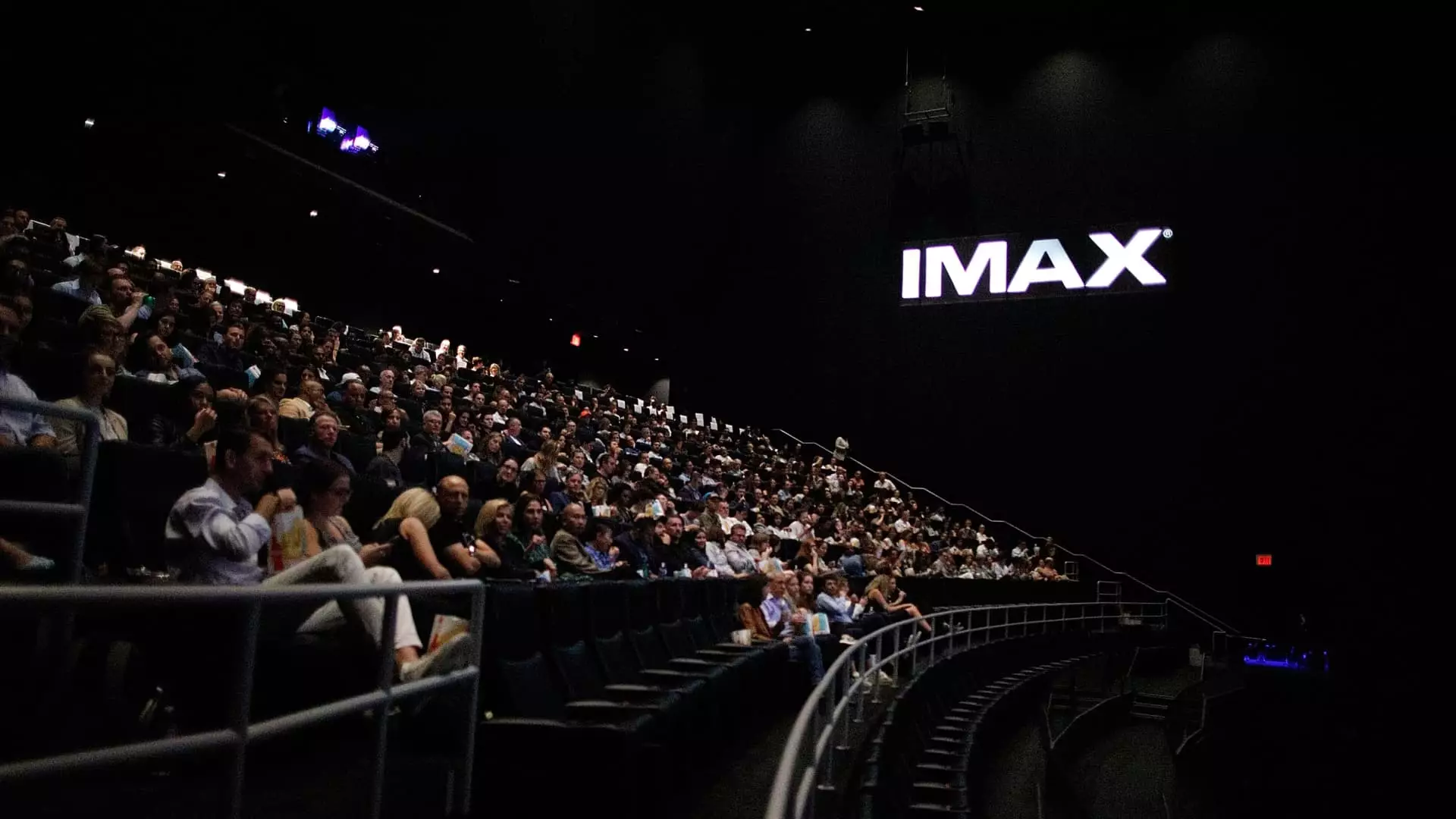In an era where cinematic experiences are becoming increasingly commodified, IMAX stands firm as a bastion of innovation and exclusivity. The decision to partner with Apple for “F1: The Movie” and leverage IMAX’s proprietary camera technology was nothing short of visionary. This move not only boosted the film’s commercial performance but also showcased IMAX’s commitment to elevating the theater-going experience. Its cameras produce visually superior content that ordinary theaters cannot replicate, thus creating a compelling value proposition that consumers are willing to pay extra for. This strategic edge underscores how IMAX is not merely a screen size or sound system but a pioneer pushing the boundaries of immersive storytelling.
The company’s focus on creating films that are “filmed for IMAX” significantly differentiates it from traditional cinema. Studios like Nolan, Villeneuve, and Cruise consciously choose IMAX cameras because they deliver a richness, depth, and clarity that standard formats cannot match. These choices translate into stronger ticket sales and better margins, making IMAX the preferred platform for high-profile blockbusters. With the additional premium price point—generally a few dollars more per ticket—IMAX’s revenue potential multiplies without significantly increasing costs. This synergy between technological superiority and premium pricing is what positions IMAX as a lucrative front-runner in the shifting landscape of entertainment.
Market Share and Strategic Positioning in a Competitive Industry
Despite representing a tiny fraction of all screens worldwide—less than 1%—IMAX commands an outsized share of box office revenue. This is a testament to its effective marketing, exclusive content, and ability to capitalize on consumer desire for premium entertainment. Behind this success lies a meticulously crafted strategy: focusing on high-end experiences rather than mass-market ubiquity. IMAX’s partnership with major studios and its emphasis on blockbuster releases have created a virtuous cycle—more eye-catching, big-budget films filmed for IMAX garner more viewers, which justifies further investments and expansion.
The company’s forecast of generating $1.2 billion globally in 2024 reflects confidence rooted in real industry movement. As the pandemic shifts the consumer landscape—where exclusivity and premium experiences are increasingly valued—IMAX’s business model turns out to be more relevant than ever. The rise of luxury experiences across sports, concerts, and Broadway shows mirrors IMAX’s approach; people enjoy paying for access to something extraordinary. Wall Street’s positive outlook, viewing shares up 60% over the past year, signals strong investor confidence in the firm’s growth trajectory.
However, IMAX faces a constrained supply side. With only around 1,700 screens globally, there remains a significant opportunity for expansion—especially as contracts for an additional 500 screens are already in place. This rapid growth potential can further entrench its market dominance, provided it continues to innovate and maintain its reputation for exclusivity and cinematic quality.
Content is Still King, but for How Long?
A notable challenge IMAX faces is what some industry insiders consider a “high-class problem”: an abundance of content. The strategic demand for “filmed for IMAX” titles means increased competition among studios to secure IMAX screenings for their biggest films. This asymmetry can lead to a situation where popular films are selectively showcased, potentially missing out on other lucrative projects. For instance, the recent omission of “Jurassic World Rebirth” from domestic IMAX screens reveals a growing tension between content demand and available theater slots.
Nonetheless, the future looks promising, with a pipeline filled with high-profile franchise releases across Hollywood’s biggest franchises—Superman, Marvel, Star Wars, and animation giants like Pixar—and international blockbusters like China’s “Ne Zha 2.” These films aren’t just driving immediate box office; they are redefining what it means to experience movies at scale. Ironically, the very success of these franchises makes IMAX more attractive to studios, as the spectacle and prestige of IMAX screenings become a key component of franchise marketing strategies.
More critically, IMAX’s global footprint and local-language films—like the mammoth “Ne Zha 2″—are expanding its reach into markets that are rapidly consuming more cinematic content. These culturally resonant films have the potential to generate several billion dollars in global ticket sales, further bolstering IMAX’s revenue and brand prestige. The strategic focus on both Hollywood blockbusters and local-language cinema demonstrates an operational versatility that is difficult to replicate.
The Future of IMAX: Growth or Overreach?
When considering IMAX’s trajectory, skepticism arises around whether this model can sustain exponential growth. While ambitions to build 500 additional theaters and expand to new markets are ambitious, the challenge will be maintaining the premium perception. As the company scales, there’s a risk that the exclusivity that underpins its success could erode, turning IMAX into just another format in the crowded exhibition landscape.
Furthermore, the growing reliance on blockbuster franchises and high-budget productions exposes the company to the volatility of Hollywood’s creative and economic cycles. The risk of over-investing in a flashy format that could be undercut by streaming services or declining theatrical attendance cannot be ignored. Yet, IMAX’s emphasis on immersive, experiential entertainment gives it a defensible niche—offering something consumers cannot duplicate at home.
In the same vein, the company’s financial outlook appears robust, thanks in large part to its focus on content filmed specifically for IMAX and its strategic international expansion. Still, it must guard against complacency, or the scene could shift quickly if a new format or technological disruptor emerges. The balance between innovation and preservation of its premium brand will determine whether IMAX remains a growth story or merely a fleeting trend in the evolving landscape of entertainment.

